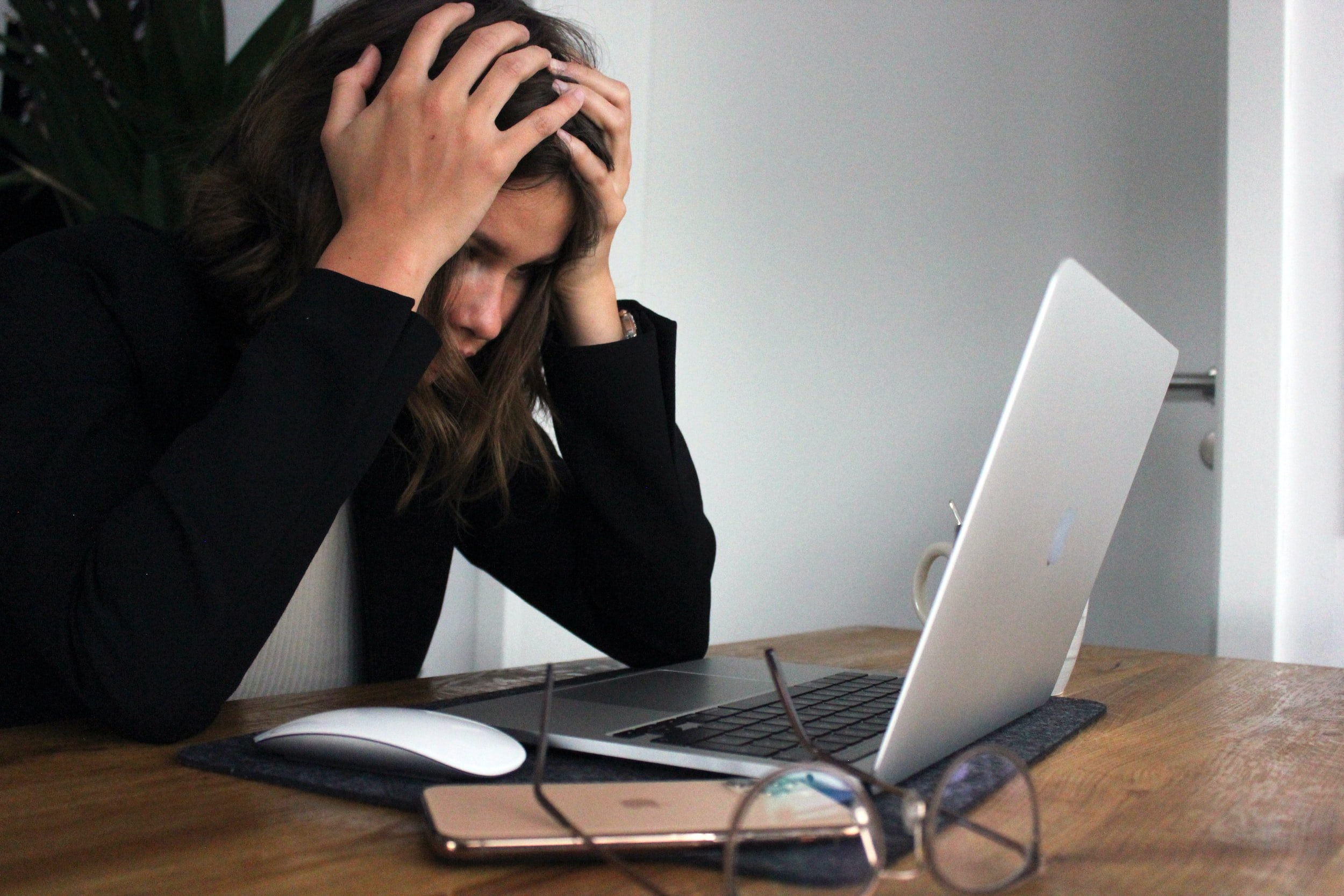How to Cope with a World on Fire in 5 Steps
Let’s face it, nowadays it feels like the world is literally always on fire. Here we are in 2022, hopefully heading to the end of a global pandemic, and halfway across the world, a senseless war on innocents begins in Ukraine. Before this, the urgency of climate change, the #MeToo movement, the Black Lives Matter movement, wildfires ravaging the United State’s west coast and many parts of Australia, and many other conflicts and disasters were blasted all over our television screens and social media news feeds. It feels like hearing and seeing the harrowing details of tragedy is inescapable, especially now that we have minute-by-minute news at our fingertips, and tons of it.
Information overload ignites our fight-or-flight response, which is caused by a little almond-shaped structure in our brains called the amygdala, responsible for the emotional response to danger. Oftentimes, we feel the need to flee, jump into action and fight, or even freeze in place. We have a tendency to over-consume information in order to regain control in what can feel like a very helpless position, especially when these disasters are happening somewhere far away from where we are. Who else is guilty of listening to the news and scrolling through Twitter at the same time, waiting for the next piece of news that makes us feel informed and thus in control?
In response to the overconsumption of news and horror, our fight-or-flight response kicks in with no immediate problem-solving that we can do to end the devastation, even as threats could come closer to home. So, we grow more and more anxious, struggling to cope with the fear, sadness, and powerlessness of not being able to do much of anything but watch from thousands of miles away, thus beginning a vicious cycle. Naturally, a feeling of dread may creep up, especially when it seems as though the horror could inch closer to home. As one can expect, people begin having cognitive distortions, such as catastrophic thinking or fortune-telling, creating even deeper anxiety that permeates their day.
Needless to say, it can be hard to cope, especially when we don’t have access to problem solving, decision making, or solutions that would make us feel safer. However, there are a few skills that we can learn in order to tolerate distress and regulate our emotions. Here are some suggestions of how to curb emotional spiraling and overwhelming feelings while it feels like our world is falling apart around us:
Step 1. Put the phone down and turn off the TV
First, we need to cut off the cause of our distress where we can. We cannot change the horrible things that are happening on the other side of the world, but we can reduce or remove our exposure to it. I’m not suggesting that you stay ignorant to world events, especially dangerous ones, but if you are getting to the verge of panic and despair, and struggling to function because of your fear, that’s not helping anyone or giving you any more control than you had before. Ask a trusted friend or family member to keep you updated on the most critical details, especially if they are related to your safety, but don’t go searching for them yourself.
Step 2. Self-soothe
Self-soothing is the intentional act of de-escalation from your mind and body’s perception of a state of emergency. It makes thinking of healthier coping skills much easier, as well as leads to decreased blood pressure, gastrointestinal distress, and tightness in your chest. After removing yourself from the source of your panic and stress, one way to go about this is by activating and engaging each of your five senses: sight, hearing, touch, smell, and taste. For sight, look around the room and name something that begins with an “A”, a “B”, a “C”, and so on, or create a piece of art with lots of color. For hearing, listen to soothing nature sounds or music, or even a guided meditation if you are into that. For touch, caress something soft, like a blanket or your pet’s fur, or take a warm or cold shower. Focus on what it feels like on your skin. For smell, light a comforting candle, or bake something that makes your home smell amazing. And lastly, for taste, enjoy your favorite meal (or what used to be your favorite meal as a child), or slowly enjoy an indulgent cup of coffee or tea.
During times when you feel most calm, take note of what you’re doing, and add it to a list in your phone of self-soothing ideas that come to mind, so you can access the list when you may need it and have trouble remembering what to do.
Step 3. Distract yourself
Distraction gets a bad reputation. I believe it’s because it sometimes can be synonymous with avoidance, however the two are not the same. Avoidance is to say, “I do not want to deal with this at all,” while distraction is “I will deal with this later.” Distraction is an amazing tool for allowing our minds and bodies to de-escalate from a very physiologically activated and emotionally reactive place. Once you’ve soothed yourself enough to regain control of your thinking, begin to engage in different activities. By engaging in something different, we can begin to de-escalate and soothe ourselves even further (maybe not all the way down to a 1, but perhaps a 5-6 on a scale of 1-10). Some examples of healthy distractions are engrossing yourself in hobbies, self-care activities, chores, errands, making something with your hands, chatting with friends or family, or even counting for a period of time will help your mind and body return to calm. Again, what makes distraction a healthier option than avoidance is the ability to come back to dealing with the stressor, just with a significantly lower emotional response. With that being said, if you feel the need to go back to get the highlights of the news, maybe only turn to one trusted news source for 10-15 minutes a day, and then go back to your life.
Step 4. Discern what is actually in your control
I’m a big fan of making lists. The reason is that we cannot possibly write as fast as we can think, so it forces our brains to slow down and compartmentalize a bit. Make a list of every single worry that you have related to the anxiety-inducing event. They can be catastrophic, unreasonable, ridiculous, valid, absurd. For example:
Putin is a crazy person and a psychopath
World War III might happen
The US government isn’t doing enough
We’re all going to die
Etc.
This list can be 3 lines long or 300 lines long. It doesn’t matter how many there are, just be sure to get as many of them as you can out of your head and onto that piece of paper. Next, what you will do is go through each item on that list and circle/highlight/star the ones that you have control over just by ruminating and obsessing about them. Some of them, you’ll have zero control over. Putin is a psycho, not much you can do there, that ship has sailed. But maybe there are a few that you do have a small portion of control over, such as “The government isn’t doing enough,” such as calling your representatives and demanding some sort of action. The list-making isn’t to prove a point that you have no control over anything at all, which may leave you feeling utterly powerless all over again, but to discern what control you do have, and refocus your attention and motivation to handling those things first before returning to the things you don’t have control over.
Step 5. Practice radical acceptance
Radical acceptance has become quite a buzzword recently. It’s defined as “the notion that suffering comes not directly from pain, but from one’s attachment to the pain.” But what does that even mean? Basically, it means that pain is inevitable, and our response to that pain is what matters in whether or not we can move forward. The more we try to control our pain (especially over the things that we truly cannot do anything about) through anger or criticism (of self or others), the worse our suffering can be. Here is what we all must accept: we cannot change the past, and we can’t predict the future. It f*king sucks that all of this is happening, but it is an ultimate truth that we all must accept in order to move forward. Radical acceptance has us facing the situation, choosing not to deny the facts, but rather acknowledge them for what they are, and realize that our emotional reactions to the facts are valid and real. With radical acceptance, you don’t criticize yourself for your reaction, but rather lean in with self-compassion for the fact that powerlessness, helplessness, sadness, vulnerability, and fear are valid responses to the things you’ve been through or the threat you currently face.
Once you regain control of your thought patterns, or at least de-escalate your emotions, you’ll be able to consider what control you do have. This stuff is scary, and that’s very much the reality of the world right now. Don’t gaslight yourself into questioning why your emotions are so escalated. Most likely, they are in fact proportionate to the state of the world right now. BUT with that being said, you don’t have to suffer all the time with those emotions. Bringing them down and refocusing your attention on taking care of yourself and then doing what you can to help is enough, and far better for your mental and physical health.







